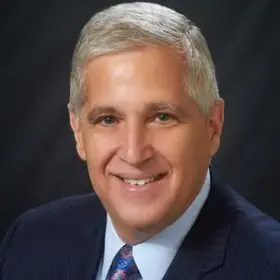By Ethan McCarty, lecturer in the M.S. in Strategic Communication program, School of Professional Studies; CEO of Integral, an employee experience agency
Change is inevitable in the life of any organization. Whether that change comes in the form of mergers, layoffs, restructuring, or technological innovation, companies must navigate the complex challenges that arise. A recent panel I had the privilege to moderate at Columbia University brought together a distinguished group of experts to discuss best practices in change management. The panelists, Cheryl Dixon, Paul Donaher, and Nicole Sweet, provided insights on how communication can play a vital role in bringing employees and stakeholders along during periods of transformation.
Change Management vs. Change Communication
One of the critical distinctions explored during the discussion was the difference between change management and change communication. Dixon, a lecturer in the M.S. in Strategic Communication program and senior vice president of marketing and communications at Nobilia, emphasized that both aspects are crucial but serve different functions. “When you have a large change that requires different processes … you bring in someone who really is a change management expert,” she explained. “Change communication is understanding how these processes are going to be interpreted by all of our audiences.” She pointed out that communicators should always be involved, regardless of the size or complexity of the change.
Leading Through Change
Donaher, principal at Paul Donaher Advisory, shared examples from his career, such as his time at Sotheby’s when the auction house transitioned to online sales. He recalled the resistance from experts within the company, who were initially reluctant to embrace the shift to digital. He explained the importance of involving people in decisions early to ensure success: “If you bring people into the party at the right time, it makes them a lot more open to accepting the change.”
Sweet, senior associate at Mercer, added her perspective, discussing the emotional aspect of change. In one case, Mercer was brought in to help a company implement a new career and compensation framework. Sweet explained, “You’d think that might not be a big deal, but at the end of the day, it’s so emotional and so ingrained in employees’ identity.” She emphasized the importance of personalizing conversations and providing managers with the tools to guide employees through transitions.
The Importance of Alignment and Clarity
The discussion also highlighted the significance of leadership alignment in change initiatives. According to Donaher, the first step to successful reform is ensuring that leadership is united. Dixon reinforced this point, recalling her own experiences where leaders were so focused on transformation that they overlooked key details. “You have to think about the people … and titles are important to them, even if they’re not important to you,” she said.
Frameworks for Success
The panelists also discussed various frameworks for managing change, citing John Kotter’s eight-step framework, which includes creating a sense of urgency, building a guiding coalition, and enabling action by removing barriers. Dixon pointed out that the model’s emphasis on urgency and enlistment of a volunteer army resonated with her, particularly in terms of understanding the “why” behind the change. “Why do we need to do this? What’s the problem? What’s the opportunity?” she asked.
Sweet, however, preferred a simpler approach, pointing to the ADKAR model (awareness, desire, knowledge, adoption, and reinforcement). She noted that all steps in this process often happen simultaneously in large organizations, making it essential to maintain flexibility and adaptability.
From aligning leadership to addressing emotional responses and understanding the nuances of culture, effective change management requires a holistic approach. As Sweet aptly summarized, “Anything that's going to impact an employee in any capacity requires some level of change management.” The key is recognizing that even small adjustments need to be communicated clearly, empathetically, and with strategic intent.
Organizations that embrace these principles are more likely to succeed in their change initiatives, ultimately creating a more resilient and adaptable workforce.
About the Program
The business world’s around-the-clock communications challenges are demanding a new level of strategic thinking. Columbia University’s Master of Science in Strategic Communication graduates emerge equipped with all the essential skills and tools for a successful career in a wide range of communication fields.


